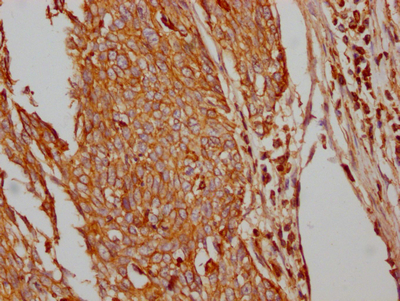The recombinant monoclonal antibody specific to the SLC2A1 protein was prepared using protein and DNA recombinant technologies. The process began by immunizing mice with a synthetic peptide derived from human SLC2A1. After that, the spleen of the mice was extracted under aseptic conditions and the total RNA of the spleen cells was extracted. The RNA was then reverse transcribed to cDNA, which was used as a template for PCR amplification of the SLC2A1 antibody gene. The obtained SLC2A1 antibody gene was introduced into a vector and then transfected into host cells for culture. The SLC2A1 recombinant monoclonal antibody was purified from the supernatant of the cell culture using affinity chromatography. It was rigorously verified and can be used for detecting the human SLC2A1 protein in ELISA and IHC experiments.
The SLC2A1 protein, also known as GLUT1, is a transmembrane protein that plays a critical role in glucose transport across cell membranes. SLC2A1 functions as a facilitative glucose transporter, allowing glucose to passively diffuse down its concentration gradient across the cell membrane. It is primarily expressed in cells that require glucose as a source of energy, such as red blood cells, brain cells, and the cells lining blood vessels. Mutations in the SLC2A1 gene can lead to a variety of disorders, including glucose transporter type 1 deficiency syndrome (GLUT1DS).





